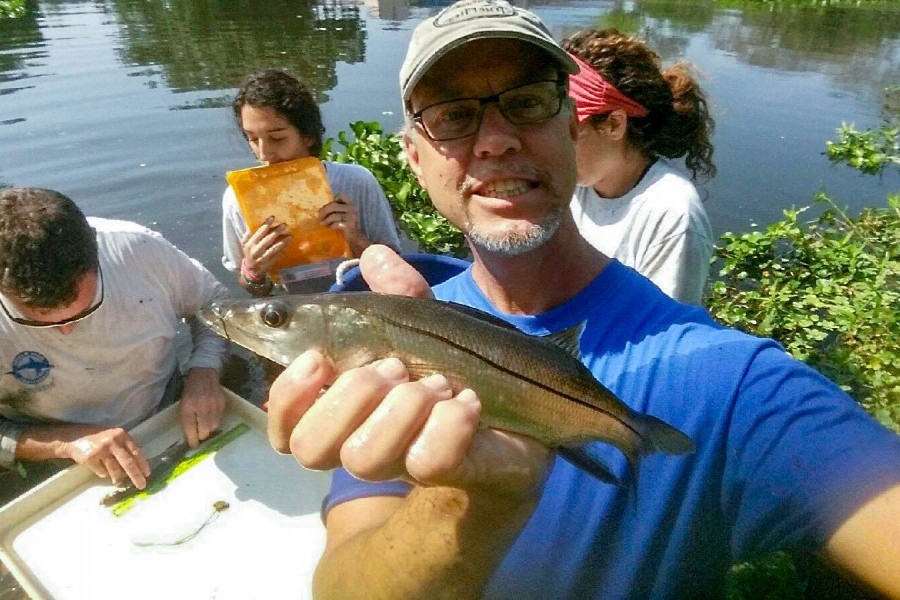Feb. 8: Sarasota Bay Fisheries Forum to discuss snook nursery habitats in an urbanized fishery
The Sarasota Bay Fisheries Forum — a group for anglers, scientists and others seeking to proactively address fisheries management and science topics in the Sarasota Bay area — is gearing up for its February meeting.
“This forum is the ideal opportunity for fishermen and women, local citizens and other interested parties to learn more about local fish species,” said Dr. Kenneth Leber, Program Manager for Fisheries Ecology and Enhancement and Associate Vice President for Research at Mote Marine Laboratory. “Conservation starts with open communication and that’s exactly what this forum encourages.”
The February Fisheries Forum meeting is free to the public and will be held from 6-7:30 p.m. Thursday, Feb. 8, in the WAVE Center at Mote, 1600 Ken Thompson Parkway on City Island, Sarasota, FL 34236.
Attendees will learn about "Stepping up and hooking up high-quality snook nursery habitats in an urbanized fishery" from guest speaker Dr. Nathan Brennan, Mote Staff Scientist. Brennan will discuss how he and other Mote scientists have used various habitat restoration principles to improve natural fish stocks around the world, including a project he personally worked on in Costa Rica. He will explain how he and other scientists worked together to convert a highly degraded cow pasture and silt-laden, erosive canal into a 50-acre snook heaven. The forum will also include how applying similar concepts to a local waterway called Blossom Brook, a small portion of Philippi Creek, located in midtown Sarasota, can improve local fish stock and property value in a natural, attractive and environmentally sensitive way.
“Typical stormwater canal systems serve to transport excess water directly from residential or inland areas to the sea,” said Brennan said. “Ecosystem health, fishery production and aesthetic appreciation are not typical priorities for stormwater management. Such systems can experience flash-flooding as well as very reduced flow, and they transport nutrient-laden sediment downstream. The good news is that many of these older canal systems are wearing out and need upgrading, and we have an opportunity to transform these systems into vibrant, eco-productive, and economically-friendly waterways that we are proud of. Slowing down flow rates, increasing sinuosity, adding sediment traps, reducing bank slope, increasing the density and diversity of submergent and emergent plants for physical and chemical filtration and fish habitat, and increasing habitat connectivity are all proactive eco-engineering steps towards creating healthier and more productive ecosystems. Healthy waterways with good physical and biological filtration will also improve water clarity, and this was recently demonstrated to directly improve property values. From a fisheries perspective healthy ecosystems lead to higher diversity and abundance of prey animals as well as high-value, predatory fish such as snook.”
The Sarasota Bay Fisheries Forum is an independent, community discussion designed to help inform fisheries management and science.
For more information visit: facebook.com/SarasotaBayForum
